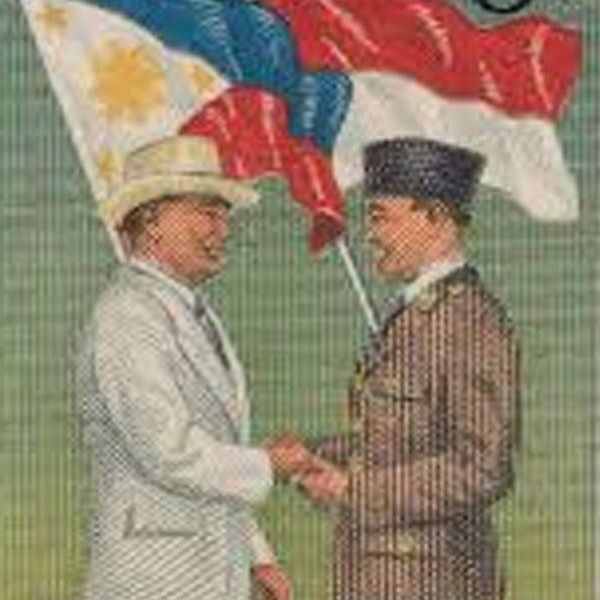The Kushan Empire established themselves as a trading, artistic, and religious powerhouse in Bactria, Ghandhara, and India starting the first century B.C.E. Location played a huge factor in their success. Their art takes elements from many surrounding cultures from past and present, creating cultural syncretism between the prominent powers of the time. Through their trade systems, they spread not only culture and art, but Buddhism, a new religion of the world. Their dedication to this new religion allowed them to become a commercial power.
The Kushan empire started as a group of nomads roaming around the Eurasian steppe. A largely sedentary society, they made their fame and fortune originally just through the means of trade. Their location in the middle of many empires, such as the Parthian, Han, and Roman, enabled them to learn how to read and write in many different languages. This allowed them to interpret and understand many different religious practices. Their economy did well from thru traffic.
Their adoption of Buddhism is what turned the empire into a powerhouse. When the Kushan army crossed into India, they adopted many of the customs from the region, religion being one of them. Their commerce and general acceptance of other cultures enticed those from the Indian region to settle in Kushan territory. [1]
Before this point, people on the Eurasian Steppe worshipped their ancestors and believed in heaven. No matter the group, most likely shared this basic belief. The unification of these diverse groups marked the transition from a tribal system to one based on agriculture and territory. They retained some parts of their tradition, mainly in the clothes they wore and in their battle tactics. Before the Kushan settled in this area, it had been a Hellenistic community. Alexander, a Greek conqueror, took over lands but was inclusive of other religions other than his own. The Kushan copied this model for their empire with great success. Examining busts and other artwork from this era and land shows Greek influence.[2]
A large influence in our information of the area comes from Kushan currency. Kushan rulers borrowed the style of their coins from the Roman empire. Their value came from the weight of their gold, not what was printed on it. The coins show pictures of rulers and religious figures, such as the Buddha, as well as writing in Greek or Sanskrit. The kings and religious figures are dressed in boots rather than sandals, which shows the transformation from one system to another. This further illuminates the explanation of cultural syncretism within many cultures.[3]
In Begram, Afghanistan, which served as the summer capital for the Kushan ruling empire, archaeologists have uncovered many treasures.[4] There were bronze sculptures from the Mediterranean, Indian ivory carvings, and lacquer ware from China. Near Swat in Pakistan, something even greater was found. Carved stone panels from a Buddhist stupa tell a story of music, dance, and other cultural elements. A harp is shown, which is a Greek instrument. The men shown on some of the panels are wearing belted tunics, a Roman style. Their pants look nomadic, as do their hats. There are men and women dressed in robes of Ghandhara style. Many of them are holding lotus flowers, which are especially attributed to the Buddhist religion.[5]
The Kushan empire even adapted Buddhism with artistic depictions and stories to attract followers from other religions and with different cultural histories. The coins with depictions of Buddha are said to be the first pictures of the Buddha. His dress contains elements of Greek and Iranian culture. Some other qualities of dress and depiction show relations to messiahs from the Zoroastrian, Jewish, and Christian traditions. The Trojan horse from Greek mythology also shows up, yet the story is translated as though the animal were an elephant.[6]
It was this cosmopolitanism and cultural synchronicity that allowed Buddhism to be spread frequently across the land. The teachings of the Buddha were simple and logical, which made it very easy for people who were not literate to adopt. There was no need for intervention from the divine for people to lead prosperous lives. Reaching nirvana and parinirvana was done based on personal merits than anyone could achieve. The calm nature of the religion was hard for many Asian people to adapt to. They didn’t understand why someone would be reborn to continue suffering. During Buddha’s time, as his disciples increased, it was very hard for them to be accommodated. They weren’t willing to even kill the smallest of flies to be agriculturally productive. This problem was fixed by the monks themselves. By patronizing the monks and nuns in stupas, merchants and laymen could be a part of the Buddhist religion and achieve nirvana. It was a win-win situation. The arhat were taken care of by merchants and merchants received religious blessings and merit by being donors. [7] Due to this, stupas sprung up in many different places all along the Silk Road. It remained this way up until the Muslim conquest of the 700s.[8]
From here, Buddhism spread throughout the world like wildfire. Monks traveled in caravans from city to city, spreading the good word and bringing with them their religious texts. Stupas and monasteries sprung up as resting grounds and dedication sites for merchants to receive spiritual healing and blessings. The texts reached as far as China, but the Chinese had difficulty adapting the tenets of Buddhism due to the language it was transmitted to them in. The language of the scrolls didn’t translate well into Chinese. However, the statues, paintings, and dress were easy for the Chinese to interpret and understand. The monks who traveled to China made it a point to offer translations for the Chinese for them to understand Buddhist teachings. Over a period of twenty years, many of the texts could be translated. Most of them were not Chinese, and came from the far reaches of the Kushan empire.[9]
In terms of geography, how the religion spread throughout the land is still debated.[10] Temporary religious need from place to place is evidenced in the dedications of stupas throughout the Silk Road and the artwork presented. Yet the cultural cosmopolitanism of the Kushan Empire, the most powerful adoptees of the Buddhist religion, is ultimately what enabled the religion to travel far and wide throughout the world. Their willingness to accept and to adapt to other’s beliefs was necessary for them to achieve prosperity and understanding.
Bibliography
- Foltz, Richard. Religions of the Silk Road: Premodern Patterns of Globalization. New York: Palgrave Macmillan, 1999.
- Xinru, Liu. The Silk Road in World History. New York: Oxford University Press, 2010.
[1] Xinru Liu, The Silk Road in World History (New York: Oxford University Press, 2010), 42-43.
[2] Liu, The Silk Road, 44.
[3] Lecture 5, Slides 11,16,17.
[4] Lecture 5, Slide 18.
[5] Liu, The Silk Road, 49.
[6] Richard Foltz, Religions of the Silk Road: Premodern Patterns of Globalization (New York: Palgrave Macmillan, 1999), 46.
[7] Liu, The silk Road, 51.
[8] Richard Foltz, Religions of the Silk Road, 43.
[9] Liu, The Silk Road, 60-61.
[10] Liu, The Silk Road, 61.





















